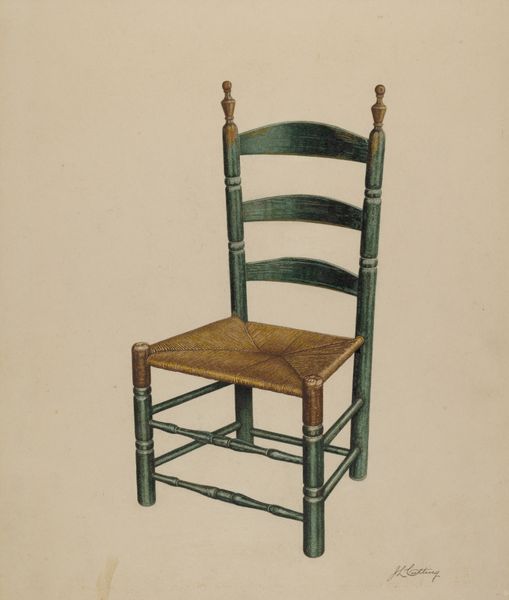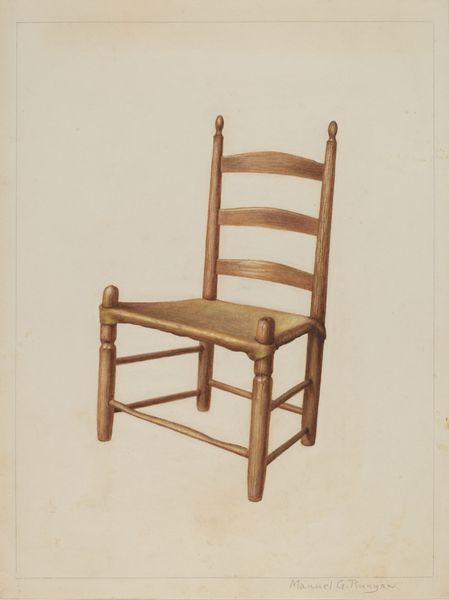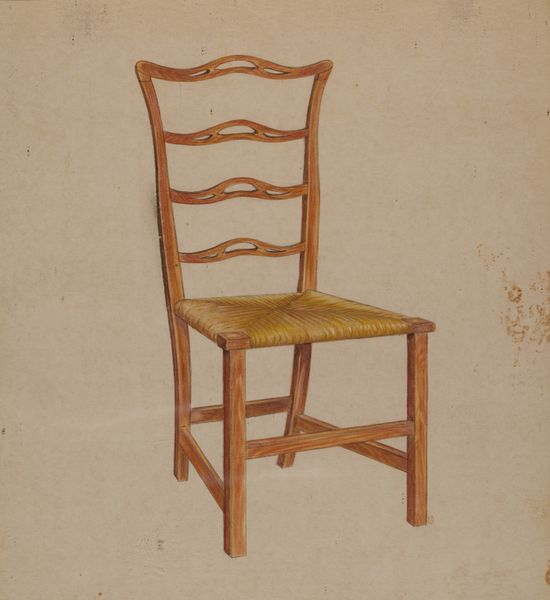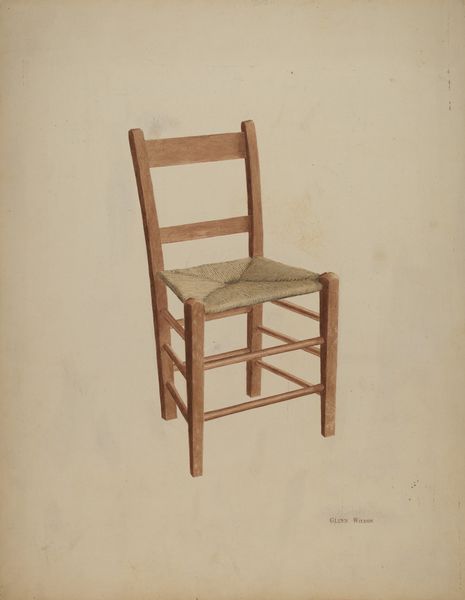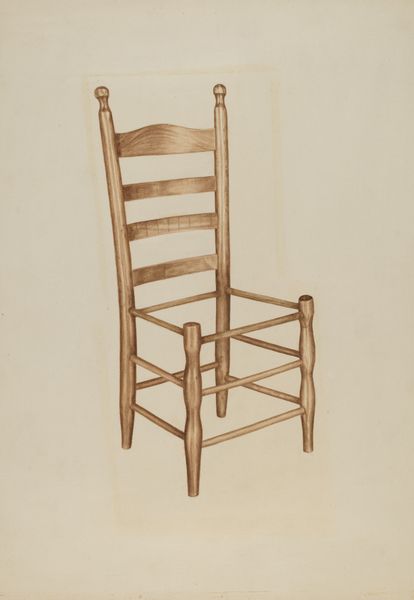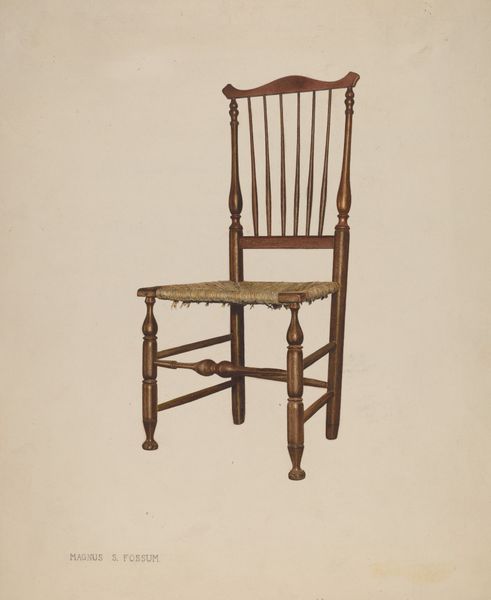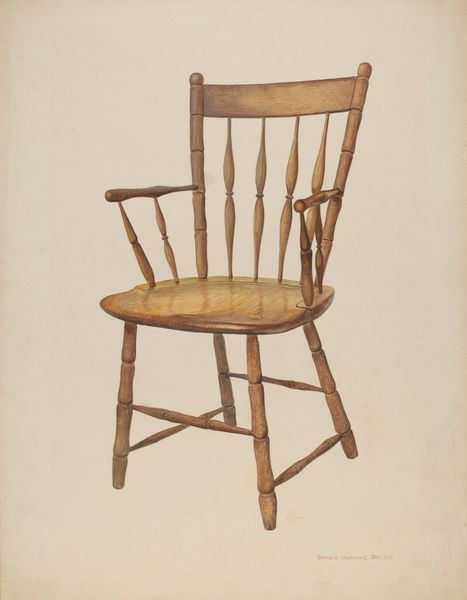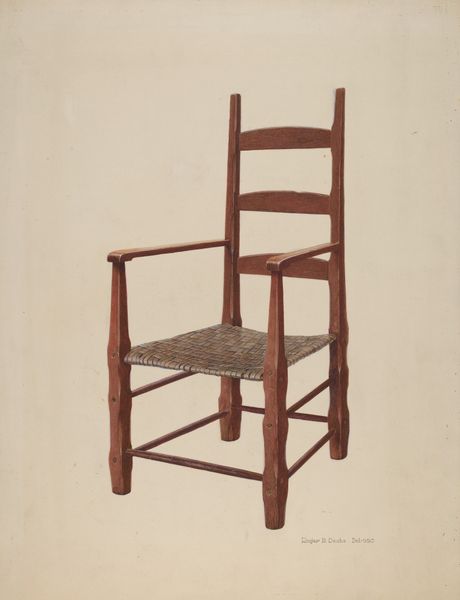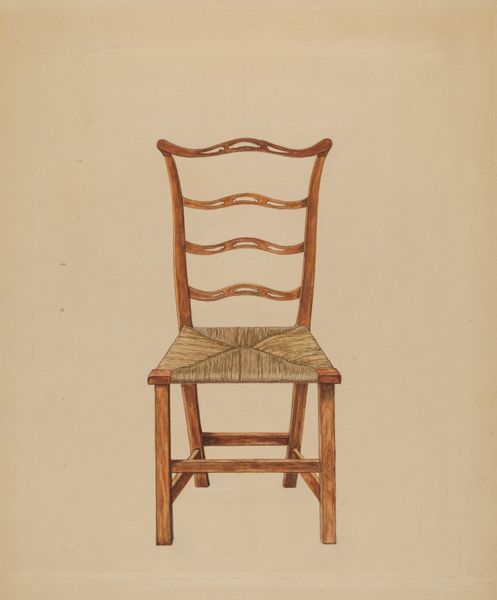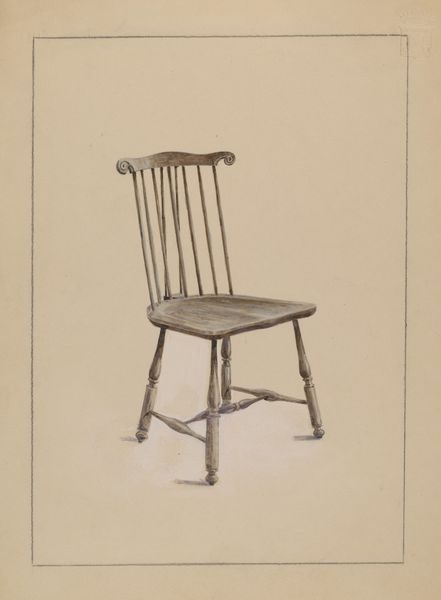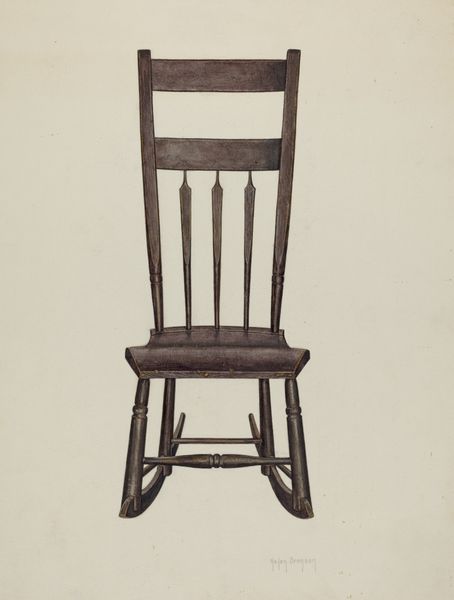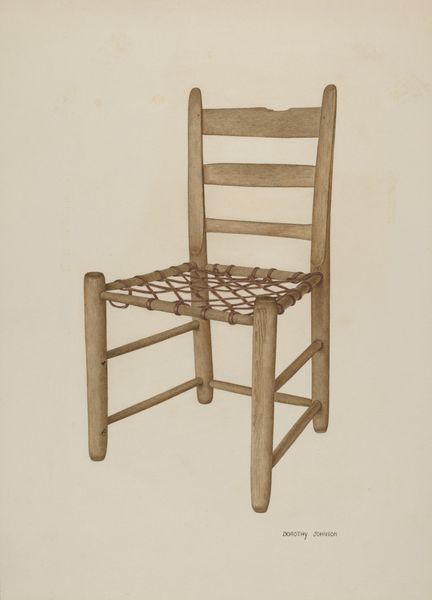
drawing, paper, pencil
#
drawing
#
charcoal drawing
#
paper
#
geometric
#
pencil
#
charcoal
#
realism
Dimensions: overall: 30.4 x 23 cm (11 15/16 x 9 1/16 in.) Original IAD Object: 18"high, 17"wide; 15" deep; 35" to top of back.
Copyright: National Gallery of Art: CC0 1.0
Editor: We're looking at Dorothy Johnson's "Rawhide-bottom Chair," created around 1939, a pencil and charcoal drawing on paper. It has such a simple, almost humble quality. What catches your eye when you look at this piece? Curator: The chair, as a recurring motif throughout art history, always acts as a silent witness, doesn’t it? A symbol of domesticity, labor, rest. This particular one, so meticulously rendered, whispers of early Americana, the stoicism and practicality of rural life. Editor: It does seem very… functional. Like it was made for sitting, not admiring. Curator: Exactly. But look at how Johnson captures the textures – the worn rawhide, the slightly rough-hewn wood. Do you notice the deliberate detail and care given to something so commonplace? Editor: Yes, the artist is emphasizing the ordinary. Curator: Think about the Great Depression era when it was made. Mass production threatened traditional crafts. Could this be a statement, a quiet preservation of a vanishing way of life? What feeling emanates from it? Editor: Melancholy maybe, with respect for simpler times and perhaps an apprehension toward the future. I initially saw it as plain but there are cultural memories that resonate within its representation. Curator: Indeed. Johnson imbues this everyday object with a profound sense of cultural weight. It moves beyond realism. The chair transforms from an item into an icon. What a transformation! Editor: That’s helped me look beyond the surface. Seeing the cultural symbolism, adds another layer of appreciation. Thank you.
Comments
No comments
Be the first to comment and join the conversation on the ultimate creative platform.


